Fenyuan Town Hall (芬園庄役場) is another example of neglected Japanese colonial era architecture in Taiwan. Built in 1935, this modest building was the administrative center of the village of Fenyuan, located on the eastern edge of Changhua back when it was part of Taichū Prefecture (臺中州). It survived the war and remained in use until 1994 when a newer town hall was built down the street. Art Deco flourishes and the rust-colored emblem over the entrance give Fenyuan’s old town hall a distinctive look. Nowadays it is derelict—but it seems likely that it will be restored and opened to the public some day.
The angular glyph above the entrance is an intriguing example of a city emblem (市徽) based on a Chinese character (“芬”, the first in the district’s name, in this case). The Japanese authorities commissioned logos for numerous administrative divisions around Taiwan (see several examples here), many of which are still in use, albeit with extensive modifications in some cases1. This practice continues in Japan to this day—check out these great examples of town logos based on kanji for a sampling. Modern Fenyuan does not appear to be using this inherited logo for anything.
Beneath the awning is a nameplate that has seen some modification over the years. Originally this would have displayed the Japanese name, Hun’en Shō Yakuba (芬園庄役場, literally “Fenyuan Town Hall”), but this was later changed to Fēnyuán Xiāng Gōngsuǒ (芬園鄉公所) with approximately the same meaning. Taking a peek inside the building through the metal shutters one will see slogans typical of the KMT authoritarian era as well as an enormous collection of decommissioned sodium vapor street lights. Nobody could think of a better use for this historic office?
Fenyuan Town Hall was recently designated a municipal monument after a protracted legal battle with several of the landowners. My understanding is that some of the owners were sympathetic to the idea of restoring and repurposing the old town hall while others were keen to demolish it and find a more profitable use for such prime real estate. In this case the forces of preservation were victorious—but not before part of the wooden addition at the back of the building collapsed due to exposure to the elements. A sheet metal shelter now encloses the damaged section of the town hall while local government deliberates what to do with it.
The decorative end tiles at each corner of the rooftop deserve a little attention. Such end tiles are a common feature of East Asian design and typically serve practical (i.e. leak prevention), auspicious, and aesthetic functions. Puzzling out exactly what term to use for these architectural features was not at all obvious. Several sources I consulted refer to what the Japanese call onigawara (鬼瓦, literally “ogre” or “demon” tile), but this term is specific to end tiles decorated with monstrous patterns designed to ward off evil2. A less ostentatious term might be hanakawara (花瓦), literally “floral tile”, which feels more appropriate given that this town hall is decorated with a peach motif, but this does not appear to be in common use in Taiwan. Perhaps the most accurate term for these decorative features is wǎzhèn (瓦鎮, literally “tile guard”), or something along those lines. In some sense these end tiles can be seen as a fusion between the “horseback” gables of Qing Taiwan, traditional Japanese architecture, and the new building materials and modernist influences prevalent at the time the town hall was built.
Finally, one may glimpse a round window and an older paint scheme through the metal sheeting around back. Although the vibrant green shade is part of the town hall’s charm it doesn’t exactly radiate Japanese colonial influence.
For more information about Fenyuan Town Hall (in Chinese, of course) try here and here. For another look at Japanese colonial architecture in Fenyuan cruise on over to my post about Yumei Hall.
- Chinese language Wikipedia has an extensive list of city emblems if you’re interested in following up with this. ↩
- The fact that English language Wikipedia has an entry for onigawara and no similar type of roofing tile suggests that the western obsession with “weird Japan” is at work. ↩
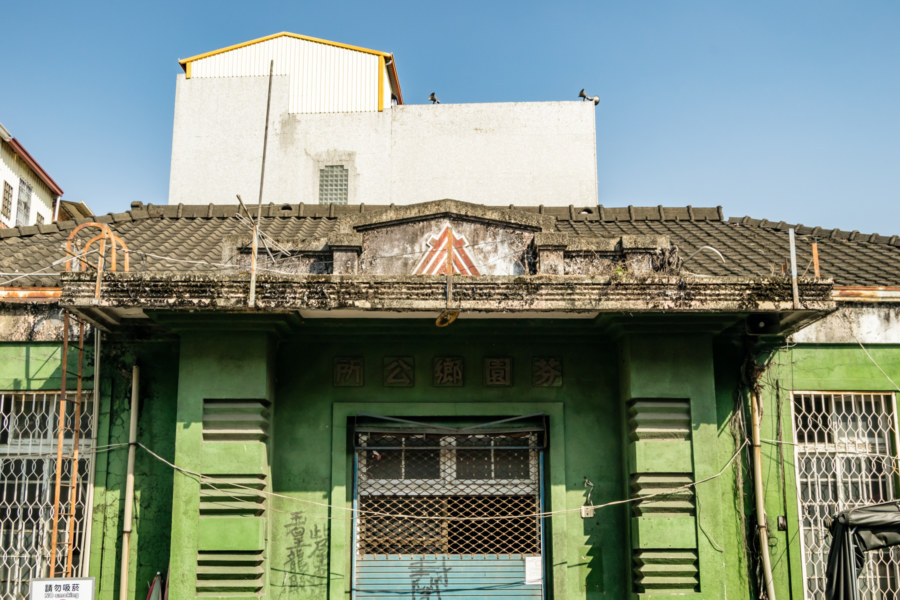
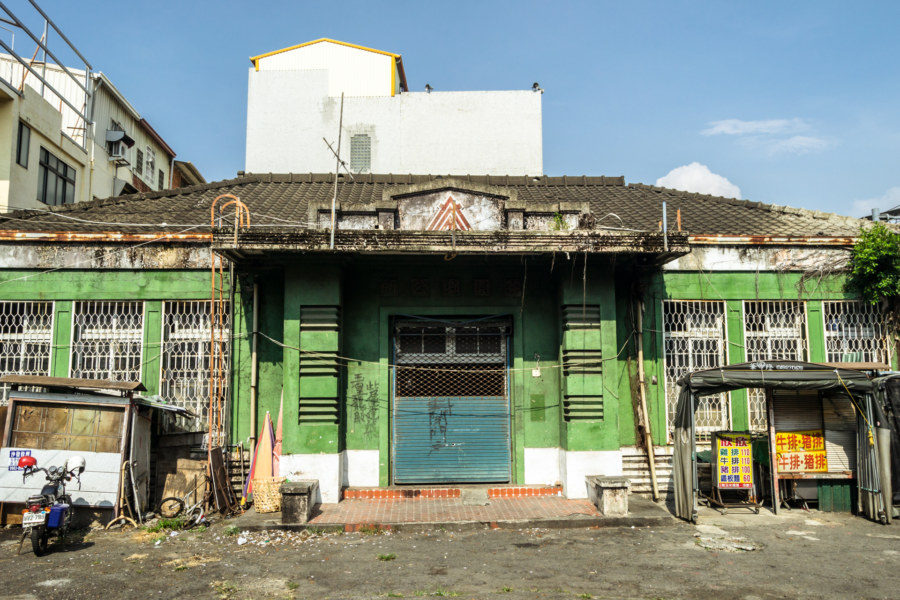
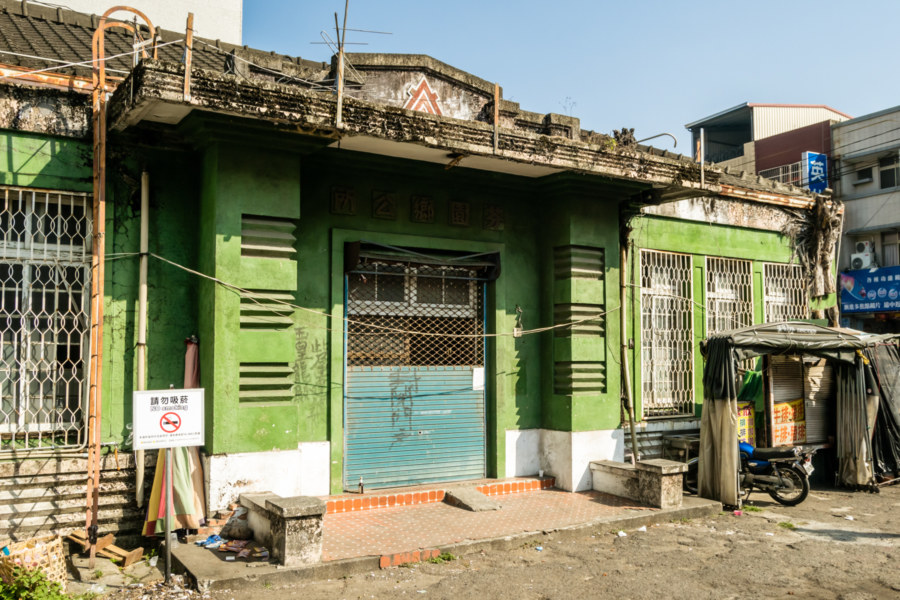
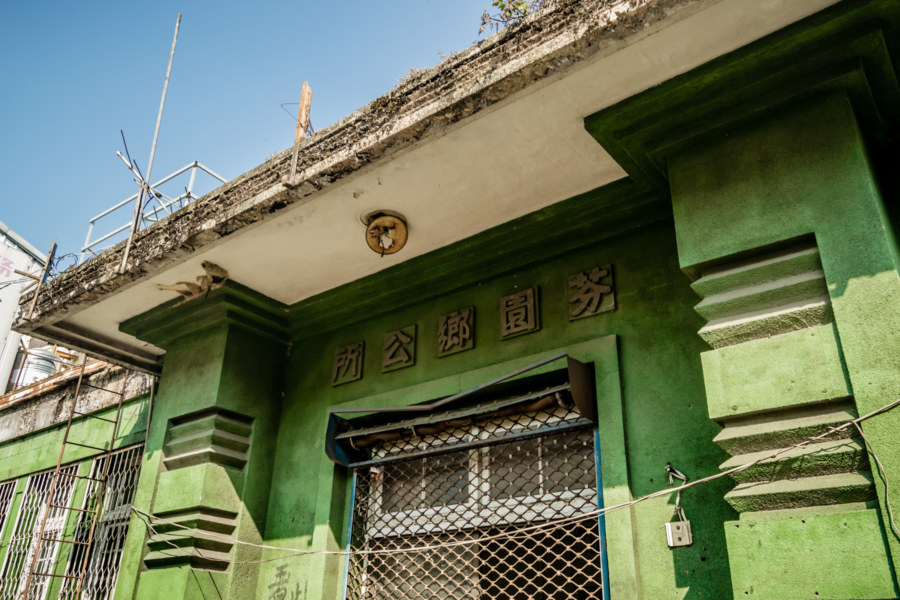
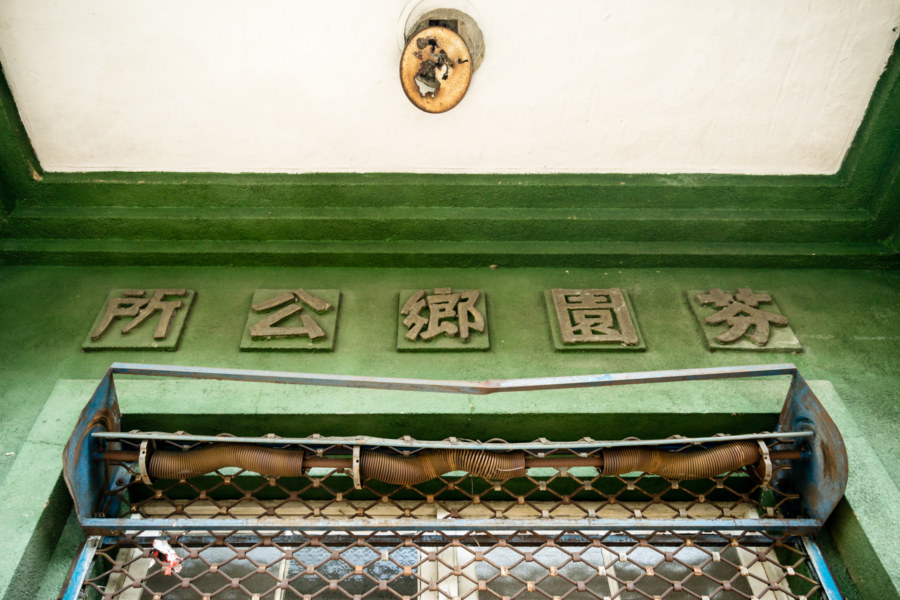
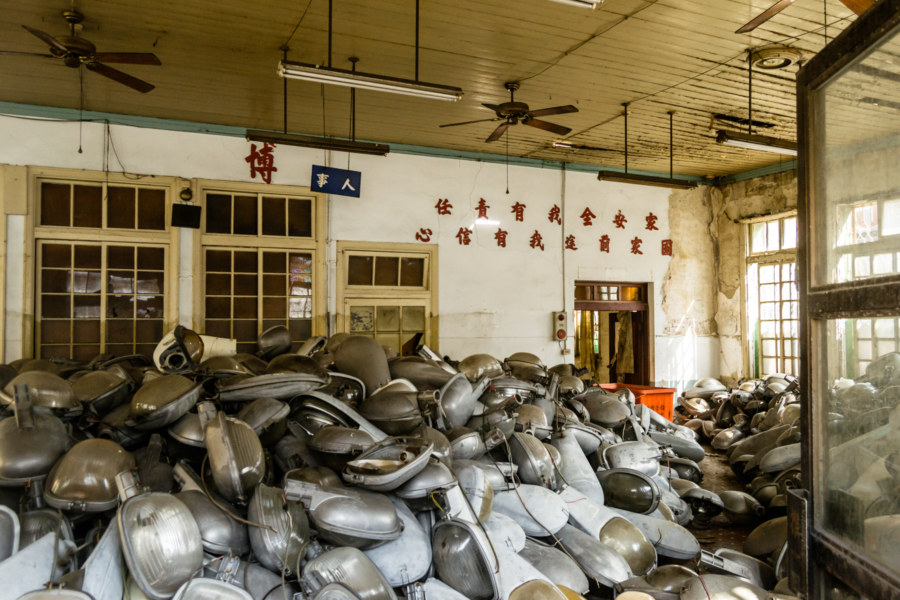
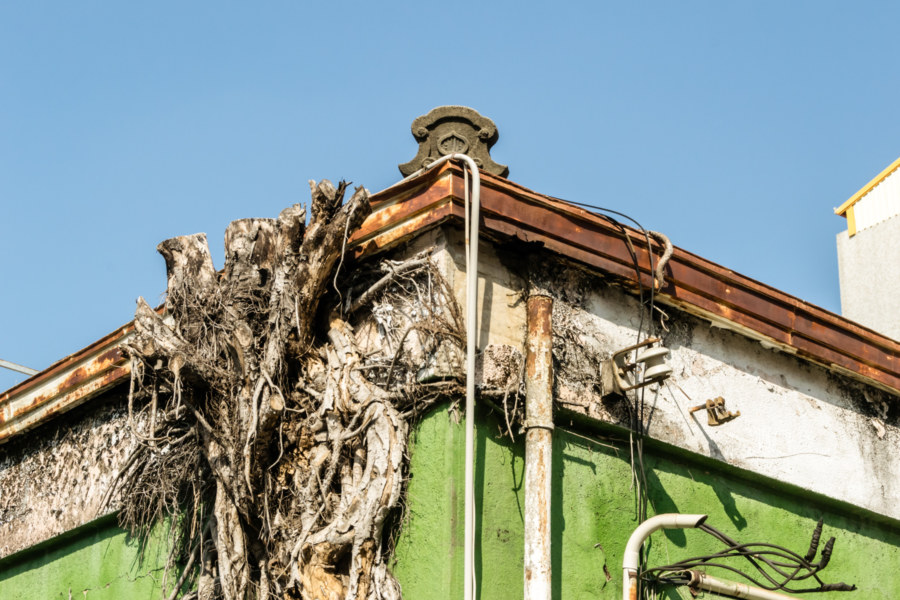
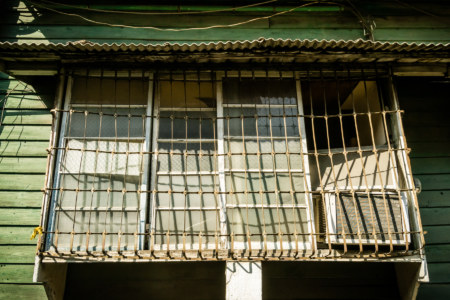
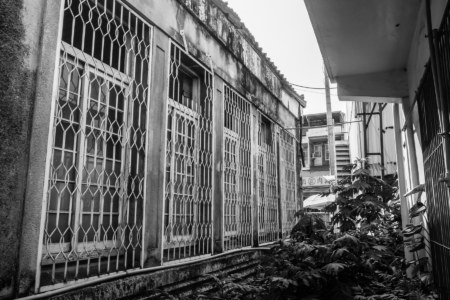
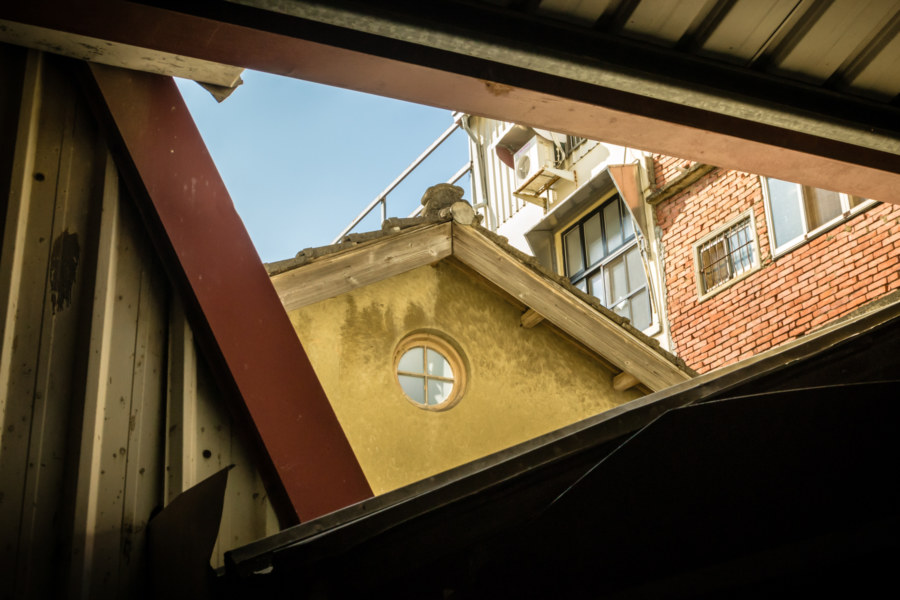
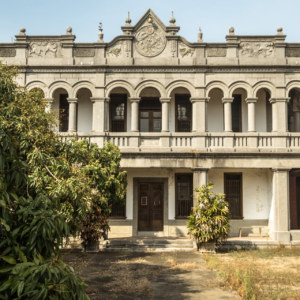
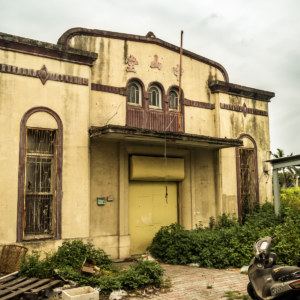
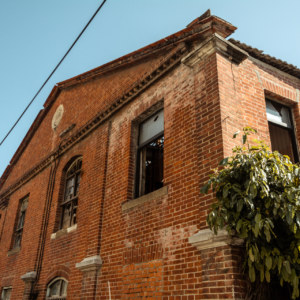
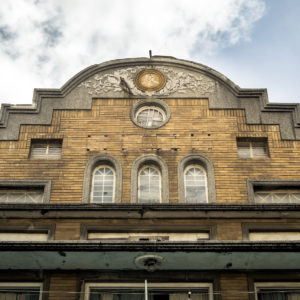
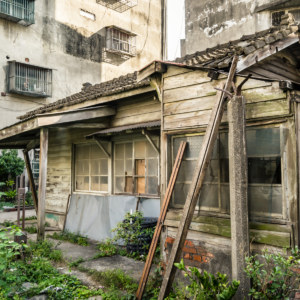
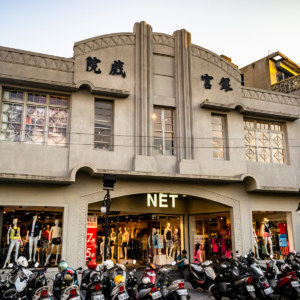
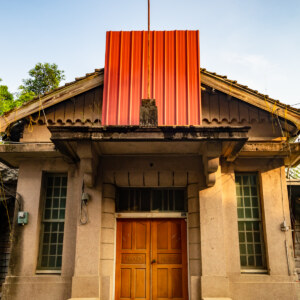
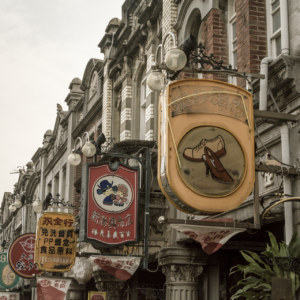
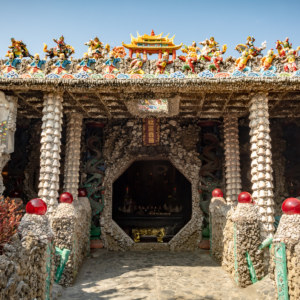
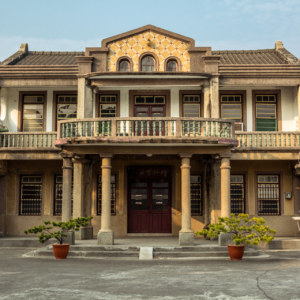
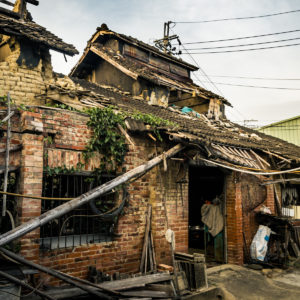
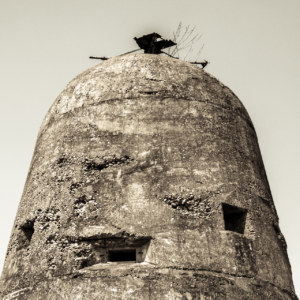
Write a Comment